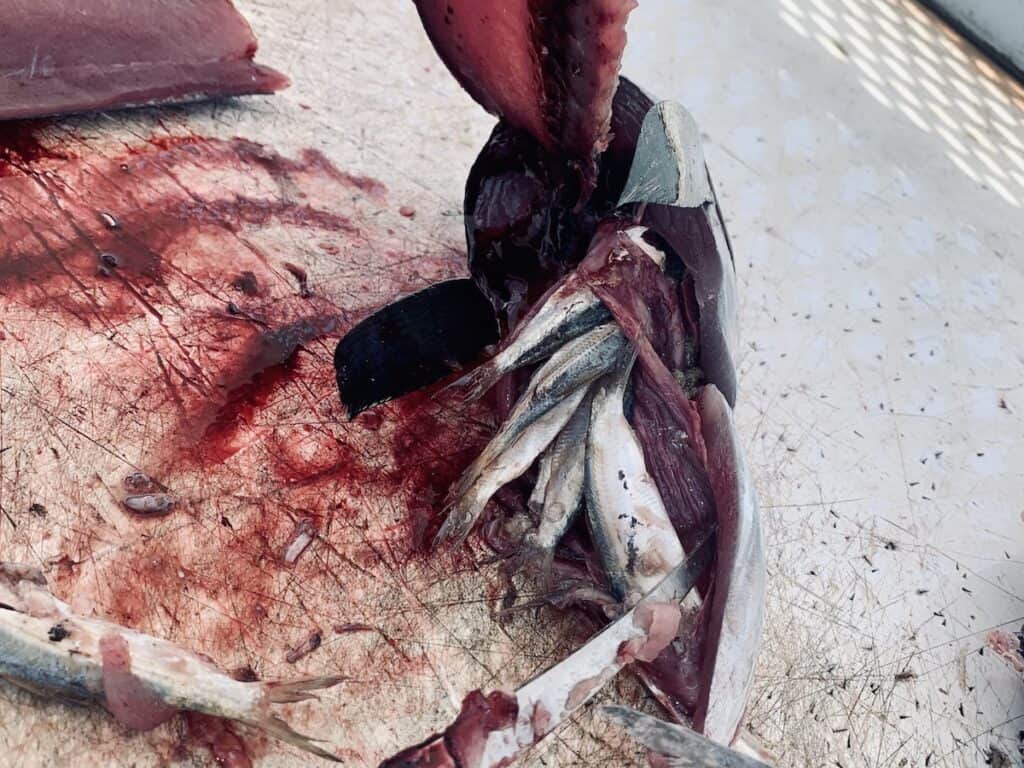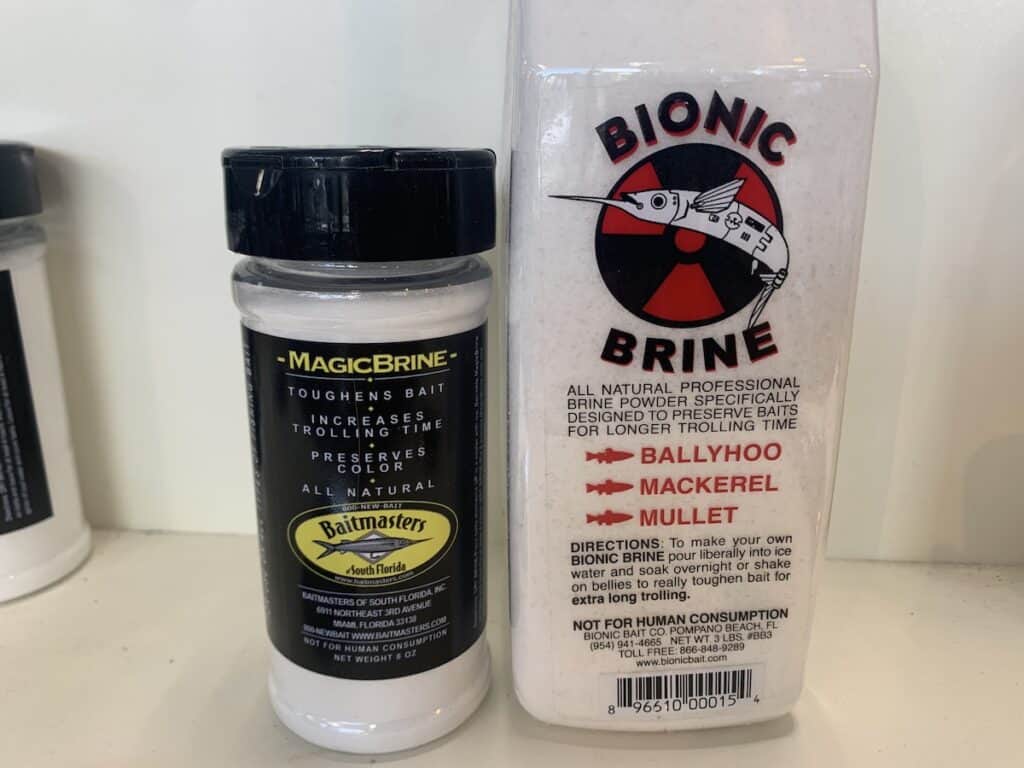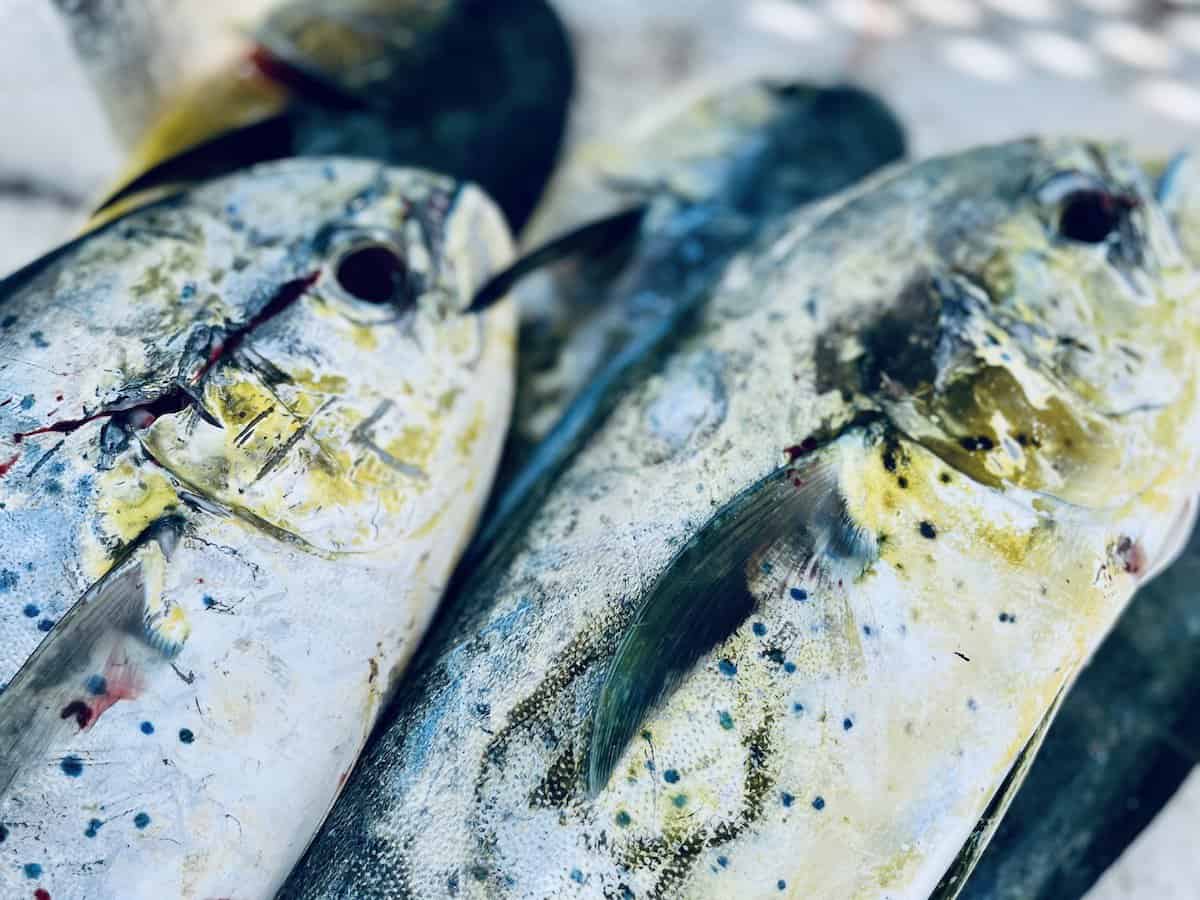When first getting started with offshore fishing, fishermen need to spend some time learning which fish can be caught with which fishing technique. Bottom dwelling reef species are usually targeted with bottom fishing techniques, but what about pelagic species that hang out in the mid to upper part of the water column?
Trolling is a technique used to target fish in the middle and upper water column. These fish species include mahi, king mackerel, tuna, wahoo, marlin and swordfish. Mahi and tuna are great species to target for newer anglers and swordfish is great for anglers looking to land their best ever trophy fish.
To effectively target these fish with trolling tactics, you’ll need to know where to find them and what baits to use. Keep reading to learn about targeting these various species.
Mahi Mahi
Mahi, also known as dolphin, are fast fighters which make them fun to catch. They usually stay towards the surface so it’s easy for offshore anglers to see their bright colors. Mahi can be found near structure and debris in the ocean. It’s not uncommon to find mahi around a small piece of debris. They like warm waters, and are easily found in the gulfstream. Moderate trolling speeds work best when targeting mahi.
The last time I was fishing near the Islamorada Humps on the Atlantic side of Islamorada, FL, we found mahi under a potato sack and a floating old captain’s chair! It may sound crazy but smaller fish such as baitfish and tripletail are attracted to the debris and mahi are normally nearby to feed on the smaller fish.
Anglers will usually troll around debris and weedlines to find mahi. Since mahi frequently travel in schools, trolling is used to locate the first one and then additional lines are cast out to hook more fish. Mahi are a common target because they taste great and can be so fun to catch. It’s common for them to hang out near the surface of the water so they can be caught with surface lines, or unweighted bait lines when trolling. When casting, you can catch them with surface lures or suspended lures just below the surface.
A while back, I went on a charter trip out of Islamorada, FL and we easily hooked into mahi when trolling a single line out with a skirted lure around a floating potato sack. As soon as the line was hooked, we casted out small live bait on spinning reels and each of us caught one at the same time. It happened so fast, we were scrambling to manage the gaff and avoid tangles!
A bull mahi is a large male characterized by a steeper sloped face than the females. If your goal is to catch a big bull mahi, it’ll be harder to find than the smaller young ones that hang around pieces of debris. To find a big bull mahi, you’re better off trolling around long weedlines with heavy tackle and big baits.
Mahi can be caught using live or dead whole baitfish or squid. They also like skirted lures and even spoons. To learn about the ideal baits to use for targeting mahi, read my article on Trolling Baits.
Tuna
Tuna are another favorite gamefish to target with trolling tactics. Tuna are built like bullets and even the small ones will fight hard. Their eyesight is great, so they’re known to be leader and hook shy. I tend to choose the lightest hook I can when targeting tuna to avoid deterring the fish.
Tuna are fast swimmers. When trolling for them, moderate to fast speeds work best. They are found near the surface or a few feet below. Chumming with live bait will usually bring the bite higher to the surface.
Tuna are known for swimming fast and growing quickly. To sustain this kind of activity and growth, they have a big appetite. They will swallow baitfish whole, and they’ll swallow a lot of it. The picture below shows the belly of a blackfin tuna we caught offshore in Islamorada, FL and you can see several nearly whole pilchards.

One of the challenges with targeting tuna is how discrete your terminal tackle needs to be. Tuna have exceptional eyesight and I usually have to use a hook size much smaller than what I’m really comfortable with to land them. I have also written an article on trolling hook sizes and styles you should check out, here.
As I’m sure you’re aware with the plethora of tuna options in grocery stores and restaurant menus, tuna are considered great tablefare. They can be prepared in raw dishes like a tuna tartare, seared, or fully cooked. Offshore fishermen are commonly aiming to fill the boat coolers with great tasting fish.
Skipjack Tuna
Skipjack tuna are rarely a targeted species. They are frequently caught when trolling for other types of tuna or mahi, though. They are easy to identify because they’re usually ten pounds or less and their pectoral fins are much smaller than other types of tuna. Skipjack tuna make great cut bait or whole bait. Skipjack tuna is also a common tuna species for canning.
Blackfin Tuna
I live in Florida, so I catch blackfin tuna most often. They have a high population here. They can be found near ledges or humps in the gulfstream. I have a vivid memory of reeling one in to the boat and watching a dusky shark take a bite. Am I crazy for keeping the filet?
Yellowfin Tuna
Yellowfin tuna love deep, warm waters. Trolling is an effective method of catching them, so long as you’re trolling in deep and warm waters, like the waters in and around the gulfstream. Yellowfin are usually very large and are frequently targeted by anglers looking to catch their biggest fish.
My go-to baits for yellowfin are flying fish, squid and other baitfish. Trolling these baits at the highest speed the bait can handle, will attract tuna. If you’re going after yellowfin tuna, I’d recommend using some heavy gear, such as a 80 lb class conventional reel.
Bluefin Tuna
The Bluefin tuna is an angling favorite. Bluefin tuna is usually what you’ll see at nice sushi restaurants when the tuna steaks are bright red. Bluefin are usually large when caught and are usually only targeted by anglers with heavy gear. These are the kind of strong tuna that you’ll fight in a fighting chair with a 130 lb class conventional reel.
Bluefin are frequently found in deep, warm waters near structure or flotsam. Squid is a great bait to use when targeting Bluefin. You’ll commonly see spreader bars or squid daisy chains used to target Bluefin tuna. To learn more about tuna lures, read my article The Best Tuna Lures.
King Mackerel
When trolling around nearshore reefs or wrecks in warmer waters, you’ll likely land some king mackerel. These fish are a common catch during winter or early springtime trolling. They are fast and wild fighters which make them fun to target on light trolling tackle.
Chum helps bring them to the surface, so anglers usually have a nice chum slick going when targeting them. Any small baitfish can be rigged to target them, and feather jigs or small skirted lures.
King Mackerel are related to Spanish Mackerel which can also be a trolling target. Spanish mackerel tend to be smaller and stay closer to shore. Offshore anglers are accustomed to catching King Mackerel, especially when trolling around oil rigs in the Gulf.
Wahoo
Wahoo are a bit more difficult to target than mahi and tuna. The wahoo tends to be one of the fastest fish you’ll target. These are the fish that require high line capacity reels because they’re capable of ripping of hundreds of yards of line before you can even react to hearing the drag or clicker.
The fast speeds in which wahoo swim and feed necessitate higher trolling speeds. When high speed trolling, wahoo are commonly the targeted species. Because of the speeds, trolling live baits is problematic. The baitfish can rarely withstand trolling speeds upwards of 10 knots.
A trolling lure such as a bullet head skirted lure works well. Whole dead baits can produce strikes but can get frustrating if they deteriorate too quickly. Whole rigged ballyhoo are commonly used, and it's a good idea to brine your dead baits with a preservation power like Bionic Brine. This will help your whole dead baits last longer on the troll.

Wahoo can be found when trolling around ledges, humps, and pinnacles. They will often be caught at the surface or suspended a few feet below. There is no minimum slot size limit on a wahoo in Florida state waters, although a daily bag limit of 2 currently stands.
Marlin
To target Marlin offshore in federal waters, you’ll need a recreational permit for Highly Migratory Species (HMS). You can apply for a permit through the NOAA website. To keep a blue marlin, it has to be 99 inches in length!
Marlin are big fish and will require the use of big baits. Bonito, mahi mahi, and whole mackerel are common baits for targeting marlin. Trolling these baits over deep drop offs or other structure can produce strikes.
Dredge bars are also frequently used to attract Marlin. Dredge bars will be trolled behind a boat to help bring marlins up towards the surface. Once closer to the surface, anglers can drop baits and feel the strikes.
Marlin tend to be targeted for the sport aspect. They are difficult to catch, difficult to land, and finding one of keeper size rarely achieved by anyone but expert anglers. You’ll probably never see marlin offered at the seafood counter in a grocery store or on a restaurant menu.
Swordfish
Swordfish are a highly esteemed fish to catch when trolling. Expert anglers will target swordfish to test their skills and prove they can catch one of the most difficult to catch fish in the ocean. Swordfish are extremely strong and fast, making for an extremely difficult fight. Swordfish are commonly referred to as a trophy fish.
They’re also very skeptical of baits. Unlike tuna and mahi where it seems you can get one strike after another without much effort, a swordfish requires careful presentation of a bait. Usually live bait is used, like whole mackerel or bonito, and it must be rigged in such a way that the presentation stays natural.
Swordfish are also known for requiring night fishing. Fishermen will rarely succeed at catching swordfish in broad daylight. Targeting swordfish is usually done on an overnight fishing trip in very deep waters with extremely high line capacity reels.
The baits are rarely presented on the surface, and instead are dropped to various depths. Swordfish targeting is generally done with several trolling lines at various depths and slow enough speeds for a bait to look natural.
Similar to a Marlin, an HMS permit is required to target swordfish. It’s not uncommon for recreational anglers to book a charter boat to specifically target a swordfish for the first time. This generally gives the fishermen the opportunity to stay on an adequate boat for the conditions and have additional fishing expertise on board.
I hope this article helps you decide which fish species to target the next time you’re out trolling. Tight lines, y’all!
Recent Posts
Fat Cow Jig Strips: The Ultimate Bucktail Jig Upgrade for Surf Fishing
As discussed in my previous article, "Surf Fishing with Bucktail Jigs: Ultimate Guide for Beach Anglers," bucktail jigs are a staple in any surf angler's tackle box, offering a versatile way to catch...
In my previous article, "Surf Fishing with Bucktail Jigs: Ultimate Guide for Beach Anglers," I introduced you to the bucktail jig and discussed how versatile of a lure it is for catching a wide range...

